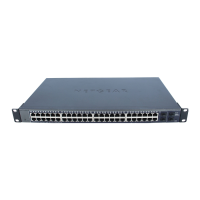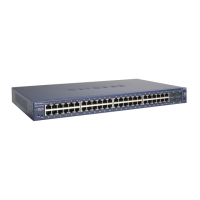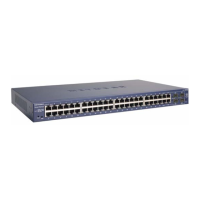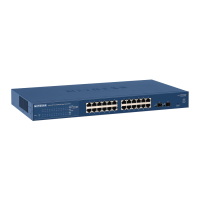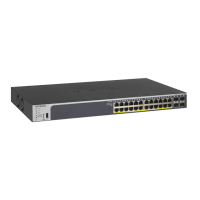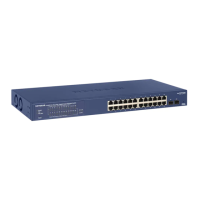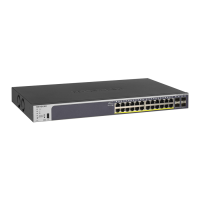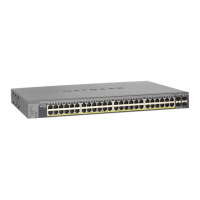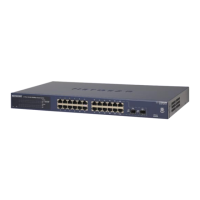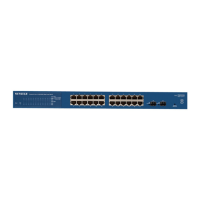147
5
5. Configuring Quality of Service
Use the features in the QoS tab to configure Quality of Service (QoS) settings on the switch. The
QoS tab contains links to the following features:
• Class of Service on page 147
• Differentiated Services on page 154
In a typical switch, each physical port consists of one or more queues for transmitting packets on
the attached network. Multiple queues per port are often provided to give preference to certain
packets over others based on user-defined criteria. When a packet is queued for transmission in
a port, the rate at which it is serviced depends on how the queue is configured and possibly the
amount of traffic present in the other queues of the port. If a delay is necessary, packets get held
in the queue until the scheduler authorizes the queue for transmission. As queues become full,
packets have no place to be held for transmission and get dropped by the switch.
QoS is a means of providing consistent, predictable data delivery by distinguishing between
packets that have strict timing requirements from those that are more tolerant of delay. Packets
with strict timing requirements are given special treatment in a QoS-capable network. With this in
mind, all elements of the network must be QoS-capable. The presence of at least one node
which is not QoS-capable creates a deficiency in the network path and the performance of the
entire packet flow is compromised.
Class of Service
The Class of Service (CoS) queueing feature lets you directly configure certain aspects of
switch queueing. This provides the desired QoS behavior for different types of network traffic
when the complexities of DiffServ are not required. The priority of a packet arriving at an
interface can be used to steer the packet to the appropriate outbound CoS queue through a
mapping table. CoS queue characteristics that affect queue mapping, such as minimum
guaranteed bandwidth, or transmission rate shaping are user-configurable at the queue (or
port) level.
Eight queues per port are supported.
From the Class of Service link under the QoS tab, you can access the following pages:
• Basic CoS Configuration on page 148
• CoS Interface Configuration on page 149
